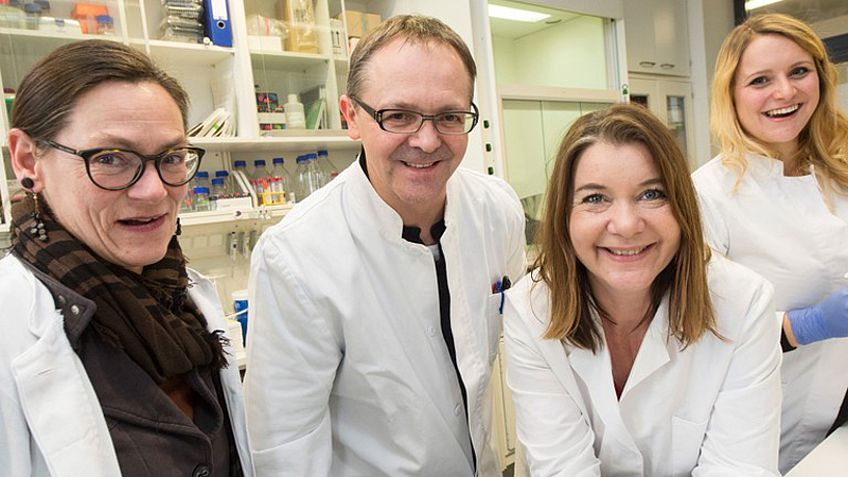Misregulation of lipid homeostasis is often associated with pathogenic changes such as cancer, cardiovascular diseases, neurodegeneration or diabetes. The highly conserved Ceramide synthase (CerS) proteins generating (dihydro) ceramide and the metabolites produced thereof have an important role in regulating lipid homeostasis.
Dr. André Voelzmann (now Postdoc at the Univ. of Manchester) of the group of PD Dr. Reinhard Bauer at the department of Prof. Hoch and his colleagues now found a mechanism that explains the dual functions of Drosophila CerS Schlank in ceramide synthesis and body fat regulation. Schlank contains a catalytic lag1p motif and, like many CerS in other species, a homeodomain, which is often found in transcription factor proteins. André showed that the homeodomain of Schlank is involved in the regulation of lipid metabolism independent of the catalytic lag1p motif. The fact that most mammalian CerS contain a homeodomain suggests a regulatory role for these homeodomains too. Whether or not this is true is yet to be determined.
These findings are published in FEBS Letters.
This study was funded by the Deutsche Forschungsgemeinschaft (SFB 645 grant to MH and RB and SFB/TR83 grant to MH).
Publication: Nuclear Drosophila CerS Schlank regulates lipid homeostasis via the homeodomain, independent of the lag1p motif. Voelzmann A, Wulf AL, Eckardt F, Thielisch M, Brondolin M, Pesch YY, Sociale M, Bauer R and Hoch M. FEBS Lett. 2016 Mar 7. doi: 10.1002/1873-3468.12125. [Epub ahead of print] PMID: 26950647
Privatdozent Dr. Reinhard Bauer
LIMES-Institut
Universität Bonn
Tel. 0228/73627 44
E-Mail: r.bauer@uni-bonn.de
Prof. Dr. Michael Hoch
LIMES-Institut
Universität Bonn
Tel. 0228/73627 36
E-Mail: m.hoch@uni-bonn.de
André Voelzmann
The University of Manchester
Faculty of Life Sciences
Tel. +44-161-27-51557
E-Mail: andre.voelzmann@manchester.ac.uk









